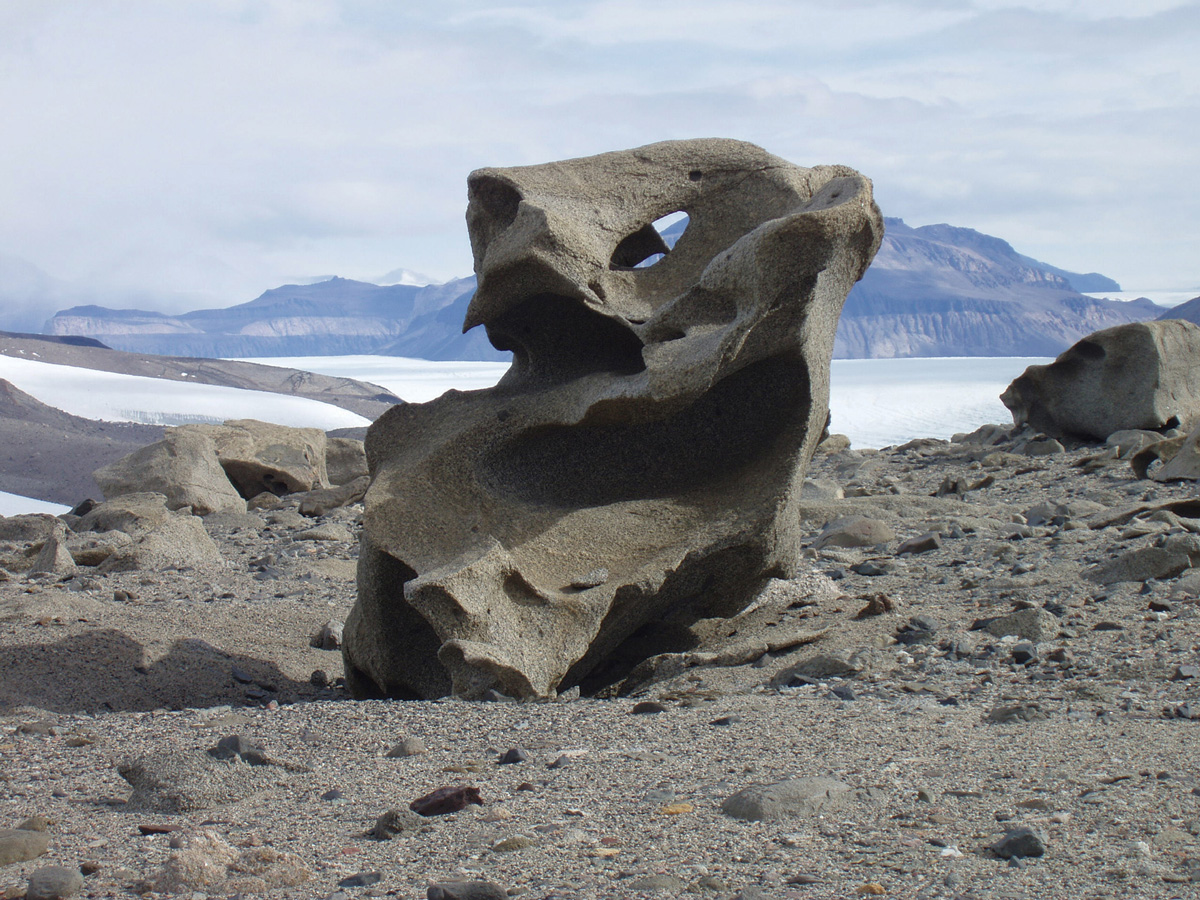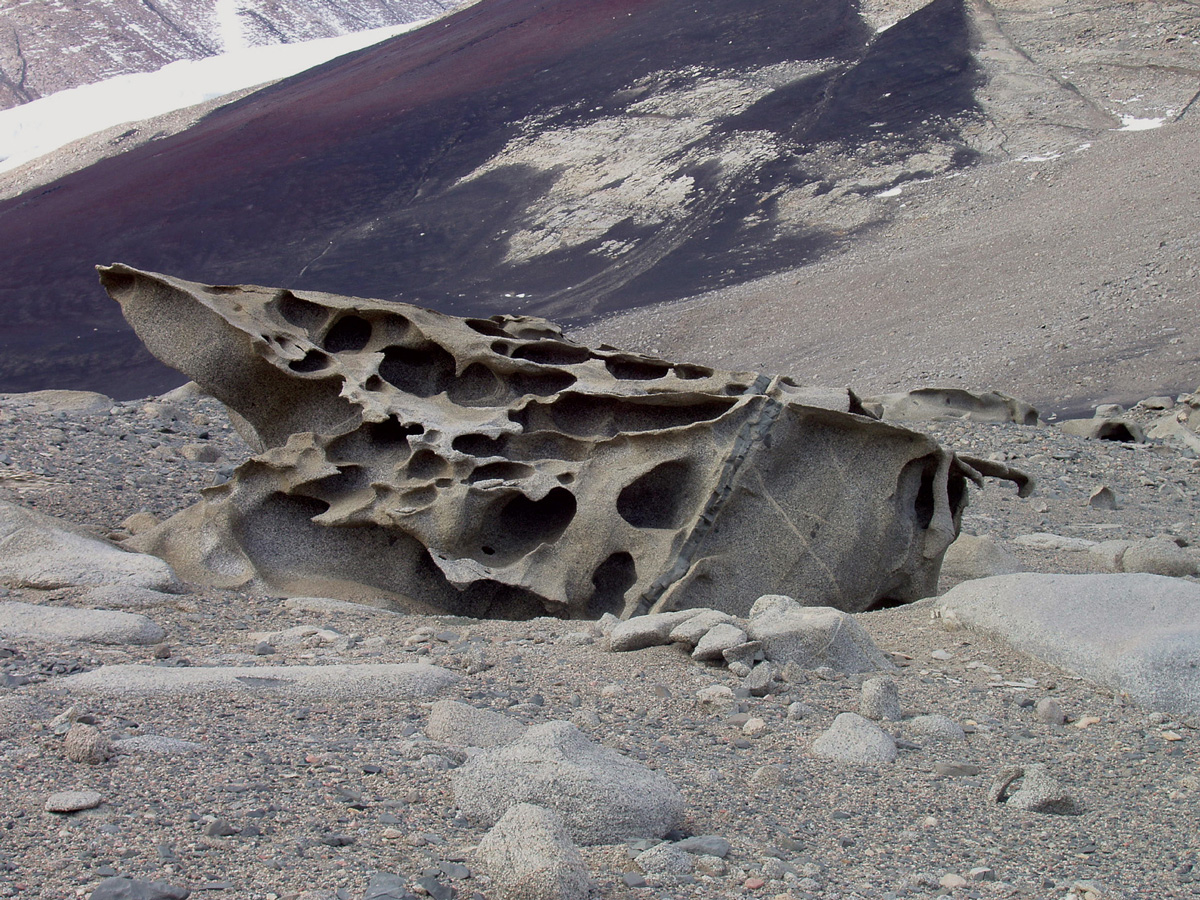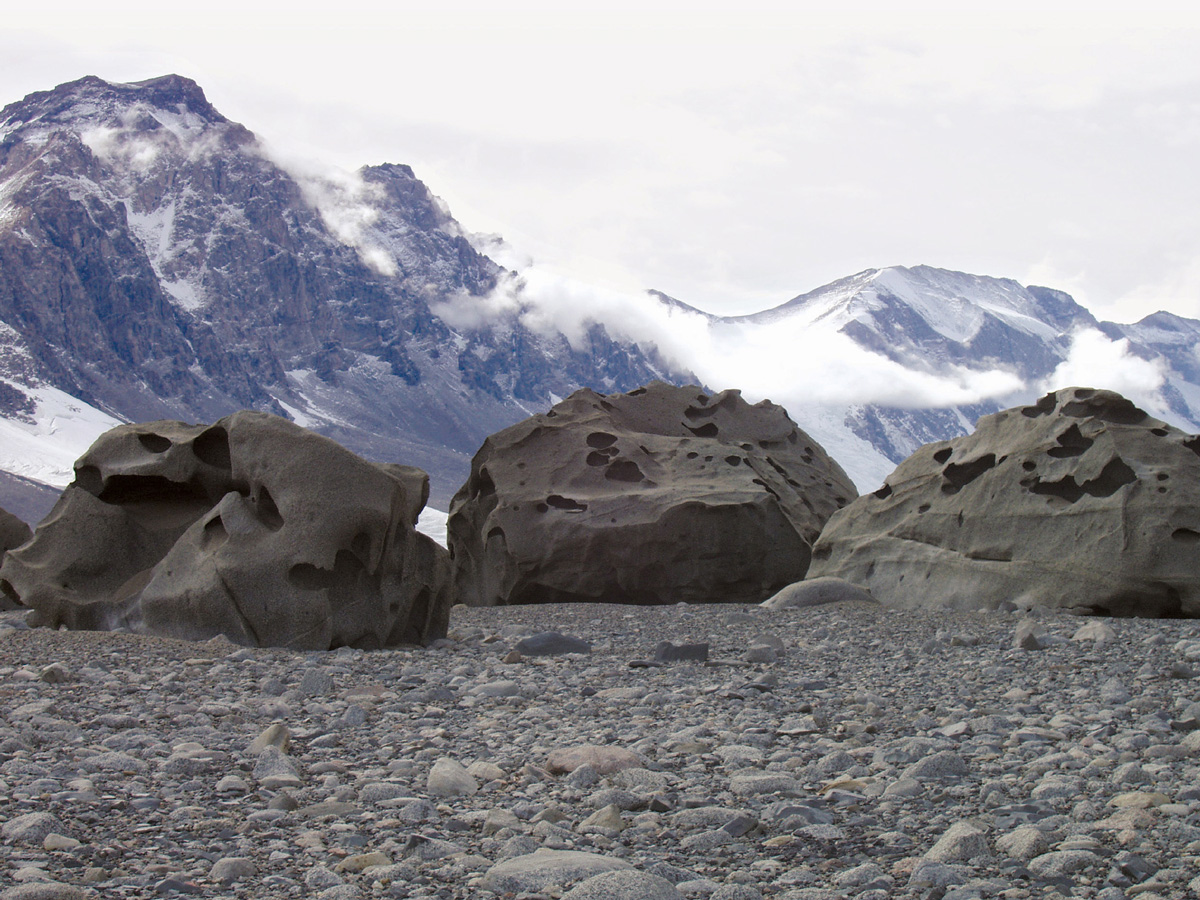Gale Forces
The ventifacts of Antarctica’s Dry Valleys
Jackie Dee Grom

The McMurdo Dry Valleys of Antarctica are home to one of the most extreme environments in the world—a polar desert blasted by ferocious winds, deprived of all but minimal rain, and beset by a mean annual temperature of negative twenty degrees Celsius. Such conditions are found only here, on a minute portion of the exposed mass of the vast southernmost continent, absent of the oppressive ice caps that engulf its remaining expanse.
This harsh setting provides ideal circumstances for the creation of ventifacts, geologic formations shaped by the forces of wind. During the Antarctic summer, from October through February, oceanic winds of ten to fifteen kilometers per hour prevail, but during winter months, gravity-driven winds pour off the high polar plateau, attaining speeds of up to two hundred kilometers per hour. In the grip of these aeolian forces, sand and small pebbles hurl through the air, smashing into volcanic rocks that have fallen from the valley walls, slowly prying individual crystals from their hold, and sculpting natural masterworks over thousands of years. The multidirectional winds in this eerie and isolated wasteland create ventifacts of an exceptional nature, gouged with pits and decorated with flowing flutes and arching curves.
I came across these ornate vestiges in 2004, as a researcher with the National Science Foundation’s Long-Term Ecological Research (LTER) project, led by Peter Doran. My activities in these alien valleys consisted of drilling through three to four meters of ice to retrieve samples from glacial meltwater-fed lakes and maintaining automated weather stations whose data provide a glimpse of the valley’s historic and current microclimate. During down times, I’d take a strenuous hike to the terminus of Hughes Glacier, which overlooks the primordial Lake Bonney. There the ventifacts seen heron these pages stood, surveying the land that gave them life. A vast display of volcanic rocks with magmatic intrusions creeping their way up through the skin of our world, it suggested an antiquated planetary vascular system and provided a visual reminder of the extremely violent conditions that created Earth.


Jackie Dee Grom is an environmental consultant who currently resides in Chicago. In fall 2007, she will continue her graduate studies in Arctic and Subarctic geomorphology and permafrost hydrogeology associated with current global climate change at McGill University in Montreal.
Spotted an error? Email us at corrections at cabinetmagazine dot org.
If you’ve enjoyed the free articles that we offer on our site, please consider subscribing to our nonprofit magazine. You get twelve online issues and unlimited access to all our archives.